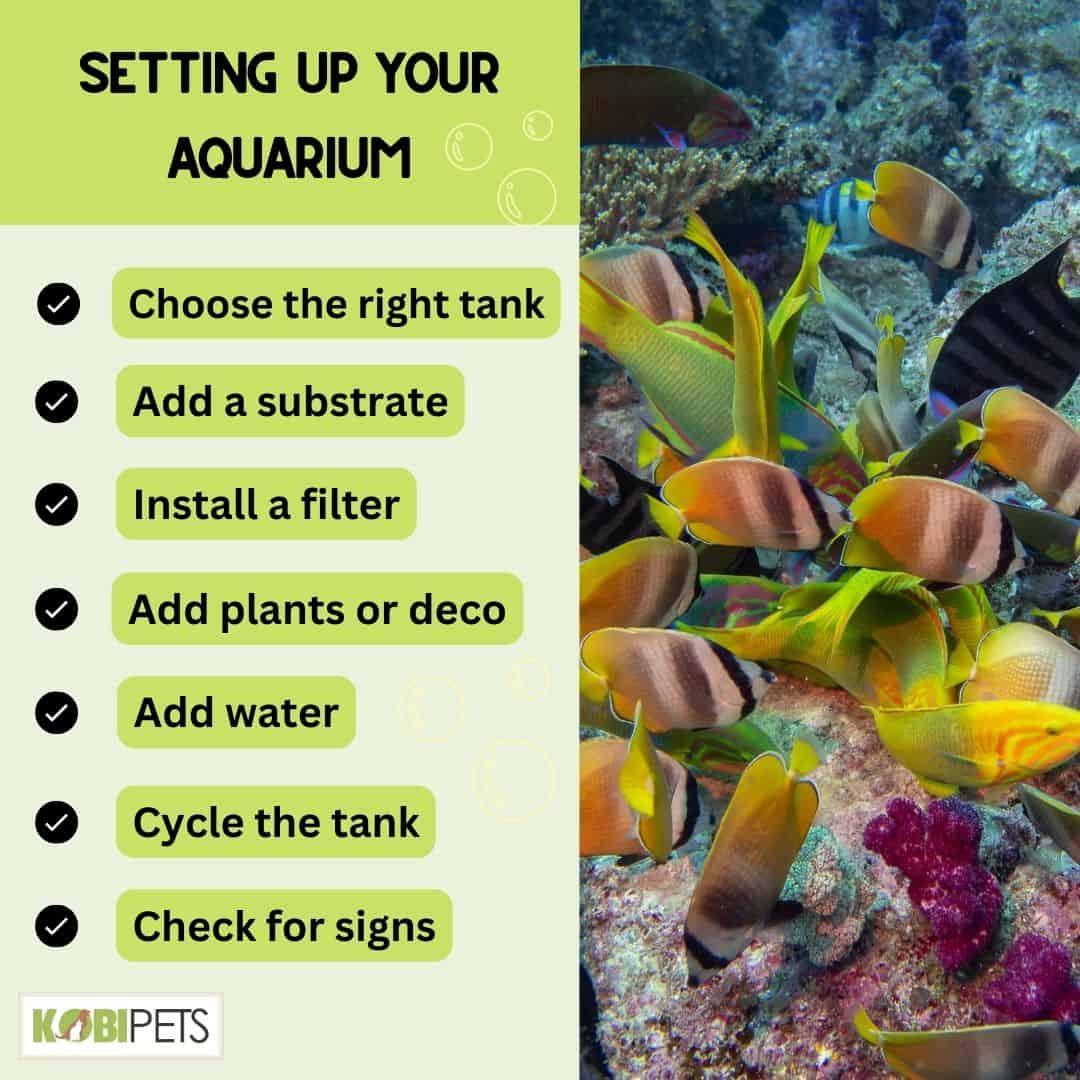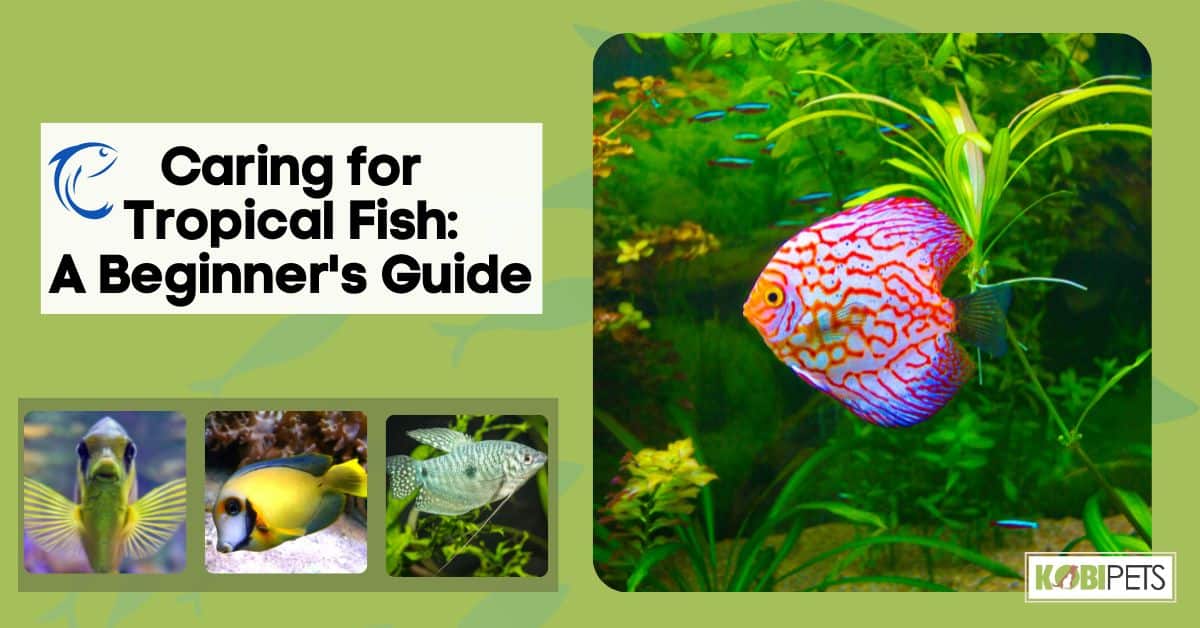
Taking care of tropical fish can be a rewarding and enjoyable experience for the whole family. There are many benefits to keeping these beautiful creatures, from providing an aesthetically pleasing decoration in your home to helping reduce stress levels.
This guide will provide you with all the information you need to get started, including selecting and buying your fish, setting up the aquarium, and providing the proper care and maintenance. With the right information and supplies, you’ll be a master of tropical fish keeping in no time!
Benefits of Keeping Tropical Fish
Keeping tropical fish as pets can provide a number of benefits, both physical and mental.

Benefits of Keeping Tropical Fish
- Relaxation: Watching tropical fish swim and interact in an aquarium can be a calming and relaxing activity, helping to reduce stress and anxiety.
- Educational: Keeping tropical fish can be a great way to learn about different species and their natural habitats. It can also be a fun way to teach children about responsibility and the importance of caring for living creatures.
- Therapeutic: Studies have shown that having an aquarium in a room can lower blood pressure and heart rate, creating a sense of calm and well-being.
- Decorative: An aquarium can be a beautiful addition to any room, and can be decorated with plants, rocks, and other items to create a unique and visually pleasing display.
- Social: Keeping tropical fish can be a great way to socialize, as many people enjoy sharing their aquariums with friends and family.
- Improve air quality: Fish produce oxygen and absorb carbon dioxide, which can help improve the air quality in a room.
Overall, keeping tropical fish can be a rewarding and enjoyable hobby that can provide a number of benefits for both the pet owner and the fish.
Selecting and Buying Your Tropical Fish
When selecting and buying tropical fish, there are a few things to consider to ensure that you are making the best choices for both the fish and yourself.
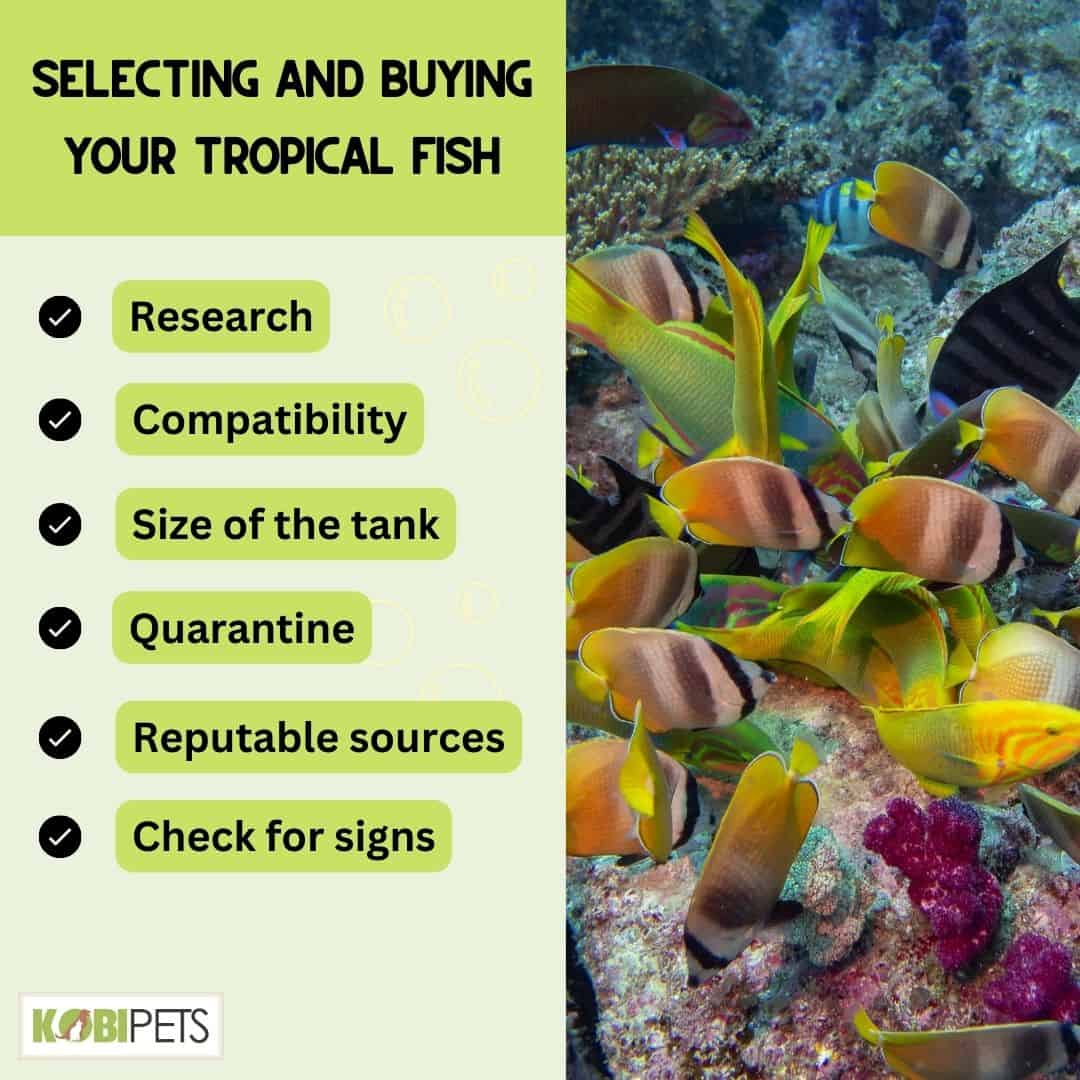
Selecting and Buying Your Tropical Fish
Research
Before purchasing any tropical fish, it’s important to research the different species that are available and their specific needs. This will help you make an informed decision about which fish will be the best fit for your tank and lifestyle.
Compatibility
Make sure to choose fish that are compatible with each other in terms of size, temperament, and water conditions. Researching species compatibility with other fish can help you avoid potential issues in the future.
Size of the tank
Keep in mind the size of the tank you have or plan to have, as different fish have different space requirements. Some species may outgrow the size of your tank, while others may not have enough room to swim and thrive.
Quarantine
When you first bring home your new tropical fish, it’s important to quarantine them for at least two weeks. This will help ensure that they are healthy and free of any diseases before introducing them to your main tank.
Purchase from reputable sources
Try to buy fish from a reputable pet store or breeder to ensure that the fish are healthy and ethically raised. Also, consider the condition of the store and the tanks the fish are being kept in, as it can give you a good idea of how the fish were treated before being sold.
Check for signs of good health
Before buying the fish, check for signs of good health such as clear eyes, fins and scales, and good coloration. Also, check for any signs of disease or parasites, such as white spots, cloudy eyes, or frayed fins.
By following these tips, you can make sure that you are selecting and buying the best tropical fish for your tank and lifestyle.
Setting Up Your Aquarium
Setting up an aquarium for tropical fish requires careful planning and preparation to ensure that the fish have a safe and comfortable environment.
1. Choose the right tank: Select a tank that is appropriately sized for the number and type of fish you plan to keep. Also, consider the location of the tank, as it should be placed in a room with stable temperatures and away from direct sunlight.
2. Add a substrate: Add a substrate such as gravel or sand to the bottom of the tank to provide a natural-looking environment for the fish.
3. Install a filter and heater: A filter is necessary to keep the water clean and free of harmful toxins, while a heater is needed to maintain the appropriate water temperature for tropical fish.
4. Add plants or decorations: Live or artificial plants and decorations can provide hiding spots and create a natural-looking environment for the fish.
5. Add water: Fill the tank with water, making sure to use a water conditioner to remove chlorine and other harmful chemicals.
6. Cycle the tank: Before adding any fish, it’s important to cycle the tank. This is the process of establishing a beneficial bacteria colony in the tank that will break down waste products and help keep the water clean.
Once the tank is set up and cycled, you can add your tropical fish to their new home. Remember to monitor the water chemistry, temperature, and other conditions regularly, and make adjustments as needed to ensure that the fish have a healthy and comfortable environment.
Feeding and Caring for Your Fish
Proper feeding and care are essential for keeping tropical fish healthy and happy.
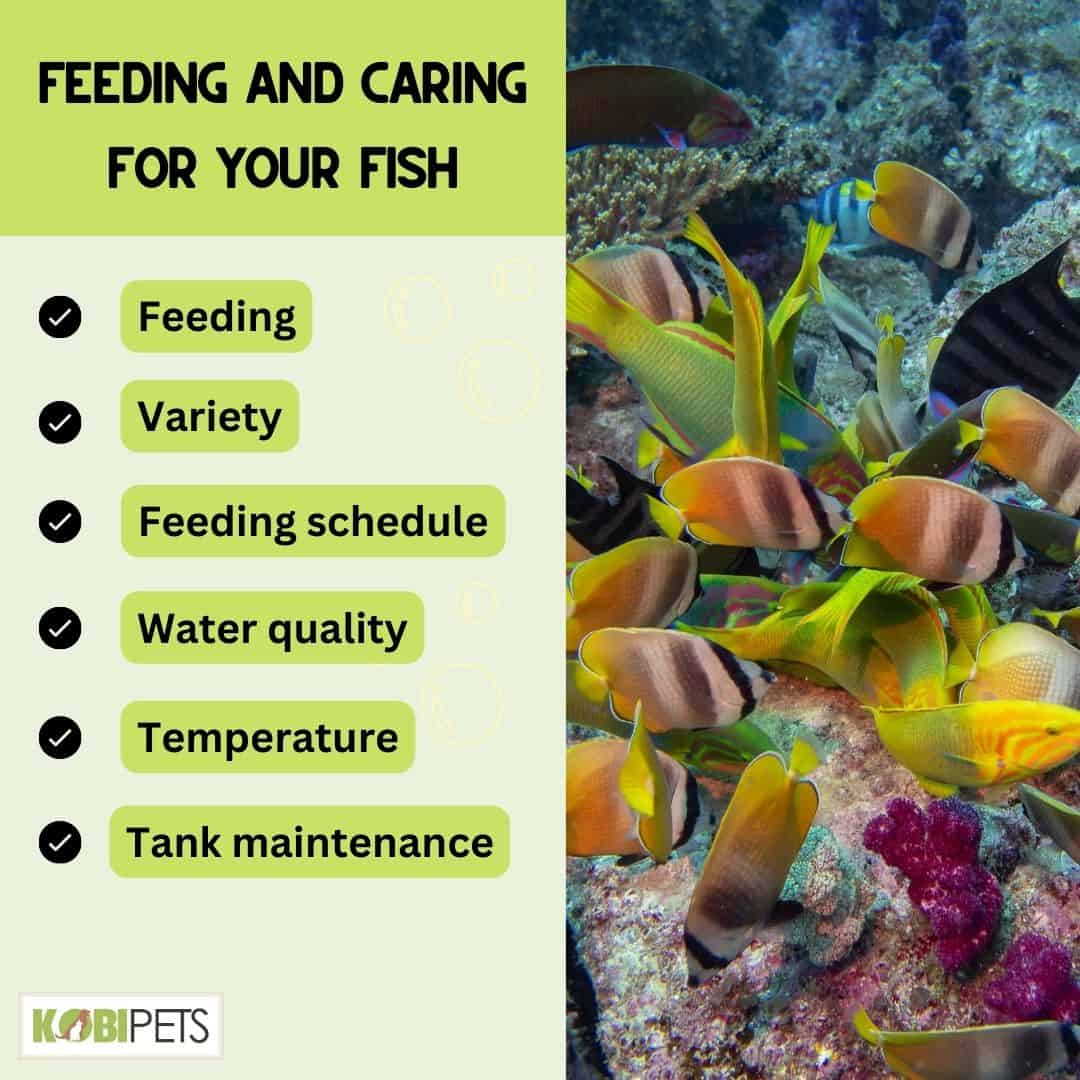
Feeding and Caring for Your Fish
- Feeding: Different tropical fish have different dietary needs, so it’s important to research the specific needs of the species you have. In general, tropical fish should be fed small amounts of food 2-3 times a day. Overfeeding can lead to water pollution and health issues for the fish.
- Variety: Offer a variety of foods to ensure that the fish are getting all the necessary nutrients. A combination of dry and frozen foods, as well as live foods such as brine shrimp, can provide a well-balanced diet.
- Feeding schedule: Stick to a regular feeding schedule, as this will help the fish get used to feeding times and they will be more active and responsive during feeding time.
- Water quality: Check the water quality regularly, and make sure to do regular water changes to keep the water clean and healthy for the fish. Use a water conditioner to remove chlorine and other harmful chemicals from tap water.
- Temperature: Maintain the appropriate water temperature for the species of fish you have. Use a thermometer to check the temperature and make adjustments as needed.
- Tank maintenance: Regularly clean the tank and equipment, such as the filter and heater, to keep the water clean and the fish healthy.
By providing proper feeding and care, you can ensure that your tropical fish will thrive in their new home. Remember that regular monitoring and adjustments are necessary to keep the fish healthy and happy.
Dealing with Common Issues That Affect Tropical Fish Health
Dealing with common issues that affect tropical fish health is an important aspect of keeping a healthy and thriving aquarium. Some common issues that tropical fish may face include disease, poor water quality, stress, malnutrition, and parasites.
To prevent and treat these issues, it is important to maintain good water quality by performing regular water changes and monitoring water parameters, providing a balanced diet and suitable environment for the fish, and consulting a veterinarian or an experienced fish keeper if you suspect your fish are sick.
Additionally, regular maintenance such as cleaning the tank and filter, pruning live plants, and observing the fish can help prevent and detect these issues early on. By taking steps to prevent and treat these common issues, you can help ensure the health and well-being of your tropical fish and enjoy a beautiful and thriving aquatic environment.
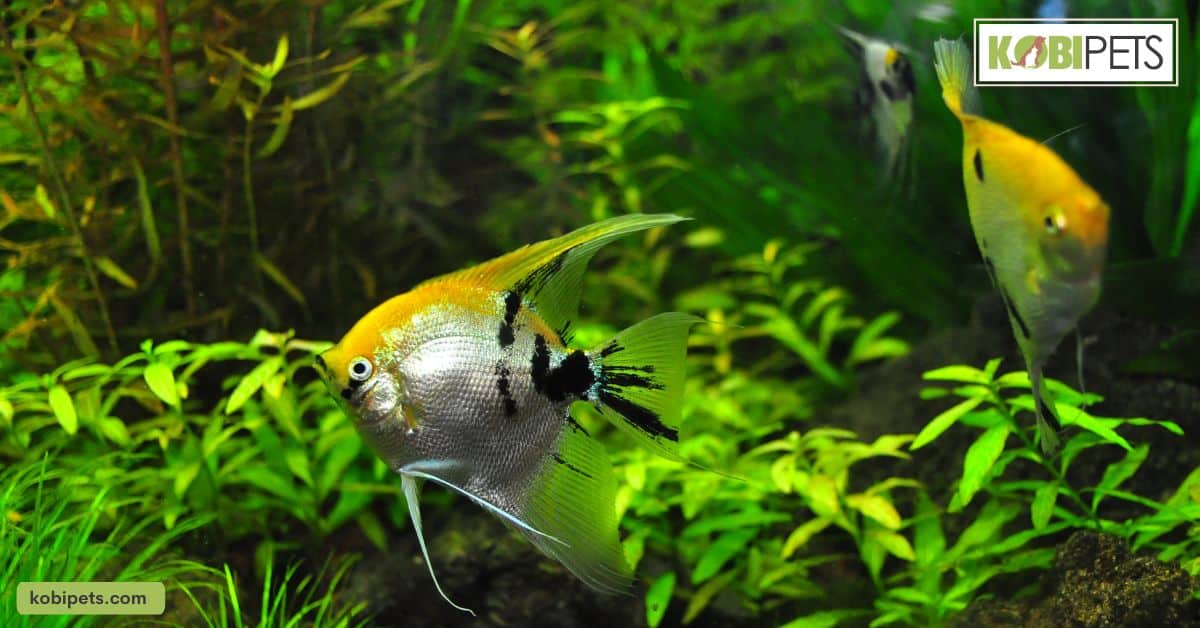
Regular Maintenance of Your Aquarium
Regular maintenance of your aquarium is essential to ensure a healthy and thriving environment for your fish and plants. Some important steps to follow during regular maintenance include performing regular water changes, cleaning the tank and filter, monitoring water parameters, pruning live plants, and observing the fish.
Water changes help to remove waste products, uneaten food, and other debris that can build up in the tank and lead to poor water quality, it is appropriate to perform a partial water change (typically around 20-25%) every 1-2 weeks. Cleaning the tank and filter regularly will help prevent the buildup of algae and other debris, and ensure that the filtration system is functioning properly.
Monitoring water parameters, such as pH, temperature, and ammonia levels, is important to ensure that the water is safe for the fish. Pruning live plants will help maintain their health and growth. And observing the fish will help detect any signs of illness or stress and ensure they are getting proper nutrition.
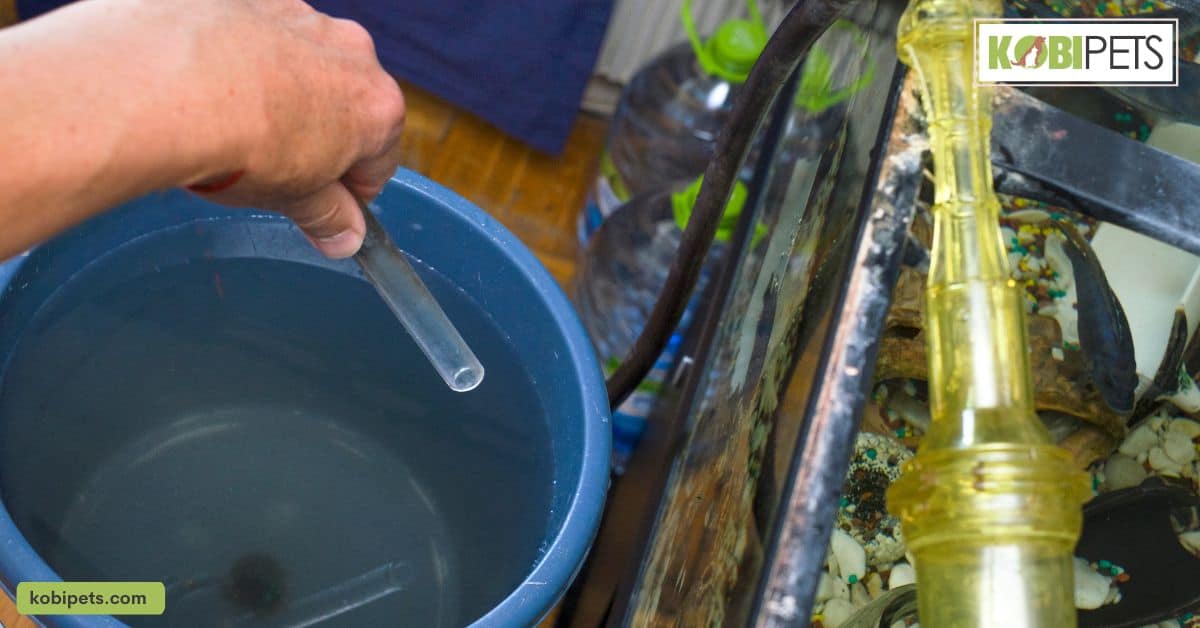
In Conclusion
Keeping tropical fish can be a rewarding and enjoyable experience for all. With the right information and supplies, you can create a safe and comfortable environment for your fish to thrive.
By selecting compatible species, setting up the aquarium properly, providing proper care, nutrition, and maintenance, as well as dealing with issues that may arise, you can ensure the health and happiness of your tropical fish.
